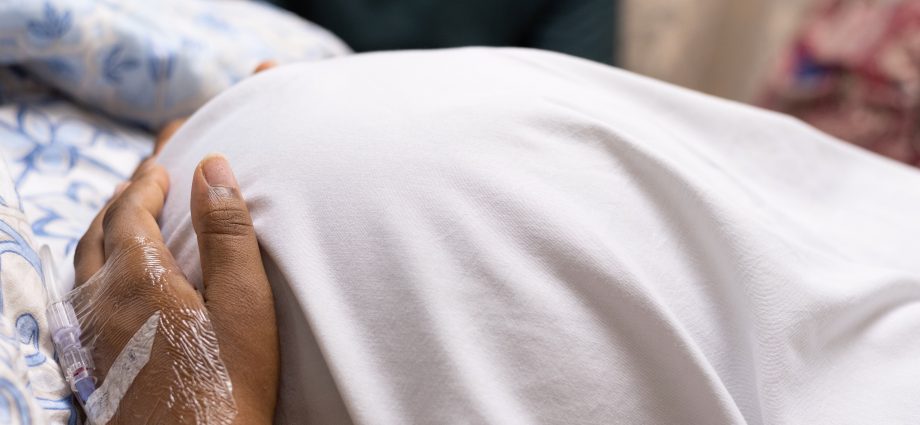WEDNESDAY, March 15, 2023 (HealthDay News) — It’s extremely rare, but the number of women suffering cardiac arrest during childbirth is rising in the United States as older, less healthy women have babies, a new study finds.
One in 9,000 women hospitalized during delivery has a cardiac arrest — a higher rate than previously known, researchers from the U.S. Centers for Disease Control and Prevention say.
“We did the study, because by better understanding how often this happens during delivery we can really improve strategies to reduce deaths among pregnant women,” said researcher Dr. Romeo Galang, a medical officer at CDC’s National Center on Birth Defects and Developmental Disabilities.
On the plus side, about two-thirds of the women who have a cardiac arrest during delivery survive, Galang said.
Cardiac arrest occurs when the heart unexpectedly stops pumping. It is a medical emergency.
Women most at risk of cardiac arrest during delivery are older, Black, or insured by Medicare and Medicaid. Also at risk are those with underlying health conditions like high blood pressure, mental health disorders, substance addiction or heart disease.
Galang stressed that women should coordinate their medical care with their doctors to be in the best shape they can be before and during pregnancy. “Really optimize your health care. It is so, so important,” he said.
Obstetricians also need to be aware of the potential risk for cardiac arrest among their pregnant patients and be prepared should it happen, Galang said. This includes being ready to do an emergency cesarean delivery and having the proper equipment and training to provide emergency cardiac resuscitation.
One health expert not part of the study stressed that it’s still a rare occurrence.
“Cardiac arrest is a very rare complication of childbirth,” said Dr. Jill Mhyre, professor and chair of anesthesiology at the University of Arkansas for Medical Sciences. “It is so rare that many clinicians who provide obstetric care never need to face it during their careers.”
This study indicates that the frequency may be increasing, but that survival to hospital discharge is also increasing, Mhyre said. “For the years 1998 to 2011, the event rate was 1 in 12,000 births, and 59% of women survived. Based on these new data, for the years 2017 to 2019, cardiac arrest now affects 1 in 9,000 women giving birth, and 69% of them survive,” she said.
For the study, Galang’s team collected data from the Healthcare Cost and Utilization Project National Inpatient Sample from 2017 to 2019. They also looked at the patient characteristics tied to cardiac arrest and survival. The researchers found that among nearly 11 million hospital deliveries, the rate of cardiac arrest was 13.4 per 100,000.
The researchers, however, could not determine the cause of cardiac arrest or identify if maternal complications came before or after cardiac arrest.
“Changes in patient populations, increased obesity, comorbidities, advanced maternal age, advances in reproductive technology and medical issues complicating pregnancy have increased the number of patients with higher medical acuity achieving pregnancy,” said Dr. Victor Klein, an obstetrics-gynecology specialist at Northwell Health in Great Neck, N.Y.
“It is also well known that the social determinants of health, older age, Black patients and those with underlying medical conditions may be at increased risk of adverse outcomes,” said Klein, who was not involved with the study.
Patients with high blood pressure, asthma, diabetes and heart disease benefit from evaluation before getting pregnant. Seeing a cardiologist and/or maternal fetal medicine doctor may be advisable, he said.
For doctors confronted with cardiac arrest, time is of the essence.
“It is important that when facing a cardiac arrest in pregnancy you realize that there are two patients involved,” Klein said. “When cardiac arrest occurs, the fetus is not receiving oxygen from the placenta. Decisions to perform a cesarean should not be delayed as neonatal survival is correlated to time to delivery — 96% if done in less than 5 minutes and 70% if done in greater than 5 minutes.”
Another important factor is determining the cause of the arrest, Klein said. Bleeding is the leading cause of maternal deaths, accounting for 10%. Bleeding can lead to shock, acute renal failure and cardiac arrest.
Klein agreed with Galang that doctors must be ready to act if cardiac arrest occurs.
“Drills to practice CPR and advanced cardiac life support, learning how to respond to bleeding, may increase the survival rate of mothers who experience this serious but rare complication,” Klein said.
The report was published online March 14 in the journal Annals of Internal Medicine.
More information
For more on cardiac arrest, see the American Heart Association.
SOURCES: Romeo Galang, MD, medical officer, National Center on Birth Defects and Developmental Disabilities, U.S. Centers for Disease Control and Prevention; Jill Mhyre, MD, professor and chair, Department of Anesthesiology, University of Arkansas for Medical Sciences, Little Rock; Victor Klein, MD, system director, quality and patient safety, Obstetrics and Gynecology Service Line, Northwell Health, Great Neck, N.Y.; Annals of Internal Medicine, March 14, 2023, online
Copyright © 2025 HealthDay. All rights reserved.

